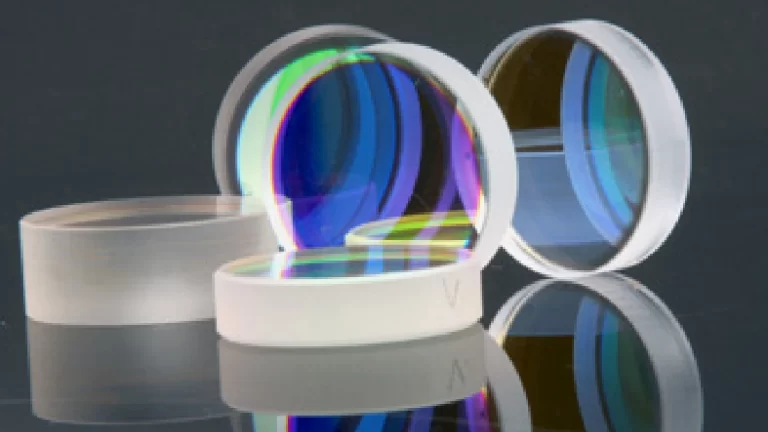The Crucial Role of Right Angle Prisms in Microscopy
Microscopes have been instrumental in unlocking the mysteries of the microscopic world, allowing us to explore intricate structures and processes beyond the limits of the naked eye. Amidst the array of optical components that contribute to the power and precision of microscopes, the unassuming yet essential right angle prism takes center stage. In this blog post, we’ll delve into the world of right angle prisms in microscopy and uncover their indispensable role in revealing the hidden wonders that lie within.
Understanding the Right Angle Prism:
A right angle prism, characterized by two perpendicular faces forming a 90-degree angle, is a vital optical component used in various applications. Typically made from glass or other transparent materials, right angle prisms are designed to redirect light without altering its orientation.
The Crucial Role in Microscopy:
- Image Orientation: Microscopes are designed to provide upright and correctly oriented images of microscopic specimens. Right angle prisms play a pivotal role in ensuring that the images observed through the eyepiece or camera remain faithful to the actual arrangement of the specimen.
- TIRF Microscopy: Total Internal Reflection Fluorescence (TIRF) microscopy is a technique used to study molecules and events occurring at the interface between two materials. Right angle prisms are employed to direct laser light through the objective lens at a critical angle, allowing only evanescent waves to illuminate the specimen. This technique reduces background noise and enhances resolution.
- Beam Splitting: Microscopes often use multiple light paths for various imaging techniques. Right angle prisms aid in splitting the light beam, directing different portions of the light to specific imaging components, such as detectors or cameras, enabling simultaneous multi-modal imaging.
- Compact Design: Microscope setups can be intricate, requiring a combination of optical components. Right angle prisms facilitate the redirection of light within a compact space, contributing to the overall ergonomic design of the microscope.
- Reflection Contrast Techniques: Certain microscopy techniques, like Differential Interference Contrast (DIC) microscopy, rely on manipulating phase differences in the light path to enhance image contrast. Right angle prisms are utilized in these techniques to introduce phase shifts, leading to improved visualization of transparent specimens.
Challenges and Considerations:
Achieving high-quality microscopy results demands precision in prism fabrication and alignment. Any deviations in the prism’s geometry or placement can lead to image distortion and reduced resolution.
Conclusion:
Right angle prisms are the unsung heroes in the world of microscopy, quietly orchestrating the magic that unfolds within the microscopic realm. Their role in image orientation, beam splitting, and contrast enhancement is pivotal in revealing the intricate details of cells, tissues, and beyond. As we continue to push the boundaries of microscopic exploration, let’s not forget the vital contribution of these unassuming optical elements, enabling us to uncover the hidden worlds that shape life at the smallest scales.
FAQs on the Crucial Role of Right Angle Prisms in Microscopy
Q1: What’s the role of right angle prisms in microscopy?
A1: Right angle prisms redirect light paths, enabling critical functions like image orientation, beam folding, and space-saving design.
Q2: How do prisms aid in image orientation in microscopy?
A2: Prisms prevent image inversion, crucial for accurate specimen observation and maintaining anatomical orientation.
Q3: Can microscopy work without right angle prisms?
A3: Yes, but prisms enhance functionality by maintaining correct image orientation and optimizing light paths.
Q4: How do prisms contribute to compact microscope designs?
A4: Prisms allow light folding, reducing the length of the microscope while maintaining optical performance.
Q5: Are prisms compatible with all microscopy techniques?
A5: Prisms are versatile and widely used in various microscopy techniques, from brightfield to fluorescence imaging.
Q6: Do prisms affect image quality in microscopy?
A6: Quality prisms minimize light loss and aberrations, preserving image clarity and detail.
Q7: Can prisms replace other optical components in microscopy?
A7: Prisms have specific roles, but they can complement lenses, filters, and mirrors to enhance microscopy setups.
Q8: Are prisms specific to certain microscope types?
A8: While applicable to various microscopes, prisms are particularly useful in upright and inverted microscopes.
Q9: How do prisms aid in fluorescence microscopy?
A9: Prisms help direct excitation light and emission light, enabling efficient illumination and collection of fluorescent signals.
Q10: Can beginners grasp the importance of prisms in microscopy?
A10: Yes, understanding how prisms influence image orientation and light paths is fundamental in microscopy education.
Q11: Do prisms impact color accuracy in microscopy?
A11: Quality prisms maintain color fidelity, ensuring accurate representation of stained or labeled specimens.
Q12: Can prisms be used in digital microscopy as well?
A12: Yes, prisms have applications in both traditional and digital microscopy setups.
Q13: Are there size considerations for prisms in microscopy?
A13: Prism size depends on the microscope’s design and the specific optical requirements of the setup.
Q14: Can prisms enhance 3D imaging in microscopy?
A14: Yes, prisms aid in obtaining accurate 3D information by preserving specimen orientation and depth perception.
Q15: Can prisms be customized for specialized microscopy needs?
A15: Yes, prisms can be tailored for specific microscopy techniques, ensuring optimal performance and results.








